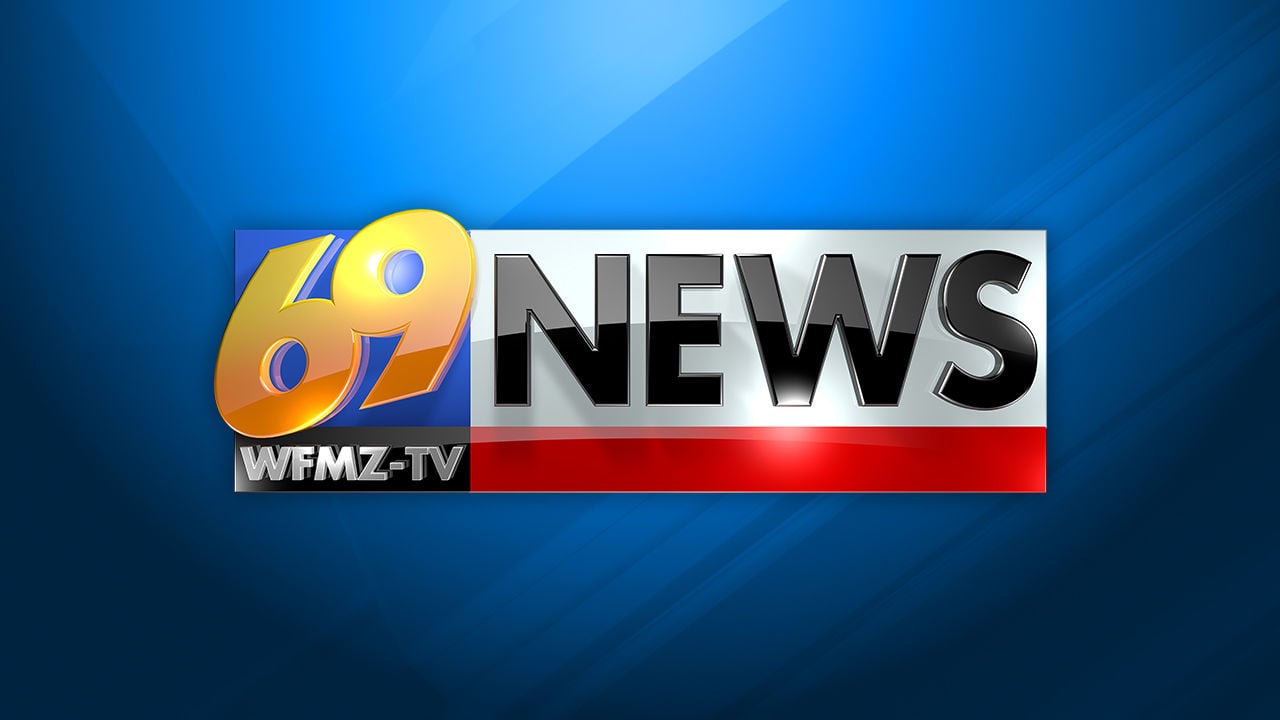Marion County has issued guidance on how to reopen schools safely during the coronavirus pandemic and the new public health order goes into effect on Aug. 6. Here’s how it will work.
Wochit
Public schools that do not offer an in-person education option could see their budgets slashed, despite prior assurances from Gov. Eric Holcomb and other state leaders that they would be fully funded.
Senate President Pro Tempore Rodric Bray sent a letter to school leaders Thursday – after dozens of districts around the state have already started — to offer “a bit more clarity” about state funding. Only public schools offering in-person instruction or both in-person and virtual options are likely to be fully funded, he said in the letter obtained by IndyStar.
Schools offering only virtual instruction should plan on operating under the state’s current funding policy, Bray said, which only funds students that receive half or more of their instruction online at 85% of traditional students. Indiana funds schools on a per-student basis, so the policy would mean that school districts offering only virtual instruction would receive about $850 less per student than they were expecting.
“That is the law today,” he said in an interview with IndyStar Thursday evening.
Dozens of school districts around the state had already started their school years by the time they received Bray’s letter – some of them virtually.
More than 30 districts are planning to start their school years online, according to State Superintendent of Public Instruction Jennifer McCormick. They stand to lose millions of dollars.
Bryna Totten, a fourth-grader, plays math games on her iPad at home during the first day of school at Washington Township. The district is starting the year virtually. (Photo: Arika Herron/IndyStar)
McCormick is now calling on Gov. Eric Holcomb to hold a special legislative session and “honor the promise he made to Hoosier children to provide sustainable funding to K-12 schools.”
On Friday, Holcomb said he remained committed to “providing 100 percent funding to schools as they navigate the unprecedented challenges of opening the academic year during the COVID-19 pandemic.”
“Many schools are returning with classroom instruction thanks to the herculean efforts of our public health officials, educators, students, parents, and communities,” he said in a statement emailed to IndyStar. “They all need our support now more than ever.”
Study Hall:Our subscriber-exclusive newsletter filled with local education news
Bray said he was not in favor of a special session.
“The point of my letter was to say we’ll try and make sure schools doing their best,” he said, “to get back into the school (building) will be funded at 100%.”
For some, it’s unclear when that will happen.
The Indianapolis Public Schools board approved last week a plan to offer only virtual instruction until at least October. IPS is the state’s largest school district. If it were to not return to school buildings this year and be held to the state’s current policy, it could lose more than $27 million.
In a letter submitted to IndyStar, IPS Superintendent Aleesia Johnson called the potential cuts “protecting our children’s health” and said that while school is “where kids should be,” she would not open the district’s schools at the risk of the community’s safety.
She said the district has spent $27 million so far on its virtual learning program and in preparing for the physical reopening of schools.
“It’s my job to ensure that when we do reopen all of our buildings, we do that in ways that accord with the guidance of public health experts and protect the health of children, staff, families and the community,” she said. “And that’s why it’s vital that people understand why, even when the number of days we’ll be in school buildings decreases, our costs are going up.”
Other Central Indiana districts also stand to lose. Washington Township, Pike Township and Hamilton Southeastern schools are all starting the year without an in-person option. The township districts are looking at losses around $9 million and HSE could leave more than $18 million on the table if it didn’t reopen.
Flora Reichanadter, superintendent of Pike Township Schools, said the letter “conflicts with the assurances we’ve received from Governor Holcomb, in the midst of a pandemic as we attempt to navigate so many unprecedented challenges.”
“We all want in-person instruction to resume if, when, and where it is safe to do so,” she said. “That will not be possible if schools are not provided with the full funding they need to operate. We will all suffer if there is even the perception that schools are being forced make decisions that prioritize the funding they need to operate in the safest manner possible, whatever that may be, over the health and well-being of their students.”
The Indiana State Teachers Association, the state’s largest teachers union, on Friday called on lawmakers to fully fund and support public schools.
“Sen. Bray’s letter to superintendents on school funding doesn’t create clarity, it creates confusion at a time when school districts are doing all they can to protect educators, students and members of their communities,” said Keith Gambill, ISTA president. “The law Bray references wasn’t intended for traditional public schools offering remote instruction temporarily during a pandemic – and he knows it. Now is not the time for state leaders to be divisive and play politics.”
Previous support
The state law at issue was intended to apply to virtual charter schools, which were knowingly created to offer a full-time online learning option. That’s a different ballgame than brick-and-mortar public schools that happen to be offering an online-only program this year, in response to the ongoing coronavirus pandemic. Many of their fixed costs – including buildings, buses and staffing – don’t change, even if the delivery model does.
Virtual students used to be funded at 90%, but saw a cut to 85% last year as scrutiny intensified over academic performance and management of virtual charter schools.
The cut only applies to the state’s foundation funding, which is the flat rate that schools get for every student. It is supposed to be about $5,700 this year. Schools get additional dollars for students who come from low-income households or require special services.
Schools across the state had been concerned about this law early in the summer as families, not ready to send their kids back into schools in the midst of the pandemic, clamored for an online option. In June, though, Holcomb said he would support fully funding all students enrolled in public school districts, regardless of whether they attend school in person or online.
Doing so would take legislative action, but two top budget writers in the Indiana General Assembly said earlier that day in June that they, too, were supportive of such action. Sen. Ryan Mishler, R-Bremen, said he would support a one-year waiver to fully fund all students enrolled in public school districts. So did Rep. Tim Brown, R-Crawfordsville, his counterpart in the House.
“As it pertains to per-student funding, I am in favor of fully accommodating schools that have students who would otherwise be attending school in-person, but given the unknowns due to the pandemic situation, may need to attend virtually,” Mishler said at the time. “As such, I support fully funding those students for this year as we wait to see what the full ramifications of the COVID-19 pandemic will be as it pertains to our schools.”
Senate President Pro Tempore Rodric Bray talking with reporters on the first day of the Indiana legislative session, Indiana Statehouse, Indianapolis, Monday, Jan. 6, 2020. (Photo: Robert Scheer/IndyStar)
That commitment, though, only extends to districts that are offering families both an in-person and virtual option, Bray said in his letter.
“State leaders have said we favor fully funding students whose families choose virtual instruction this year dur to the ongoing COVID-19 pandemic,” he said. “I believe there is a strong appetite for making that change.
“However, there is not guarantee such an exception will be made for schools that don’t give families the option of in-person instruction in a school building.”
Unanswered questions
The letter leaves a lot of unanswered questions about how the policy will be implemented. The law was written to apply to fulltime virtual schools, which knew they would be offering only online instruction for the entire year.
The public school districts that are operating entirely online right now aren’t in the same position. All have said they hope to get back to in-person instruction at some point this year. When and if that happens, though, will largely depend on how the pandemic progresses in Indiana.
The state recorded its highest single-day new case count ever on Thursday and then broke that record on Friday with more than 1,200 new cases.
On Thursday night, Bray said he wasn’t sure how it would apply to schools that operate fully online for a quarter, or a semester.
And the law could still apply to schools that want to open, but aren’t allowed to because of requierements from their county health departments.
In Elkhart County, a coronavirus hot spot, all public schools will operate virtually until at least Sept. 28 at the recommendation of the county health department.
Marion County has set positivity rate thresholds to determine how schools may operate. Middle and high schools can only operate at 50% capacity until the rate drops below 6%. It is currently 9.3%, according to data released by the Indiana State Department of Health. The county’s positivity rate hasn’t been below 6% in a month and the number of confirmed daily cases has tripled since that time.
Bray said these are all questions that lawmakers didn’t contemplate when they wrote the current law and will have to hash out when the legislative session starts in January. But, right now, schools that aren’t offering in-person instruction should plan to be funded as current law dictates.
“The statute says 85%,” he said.
Schools are calling for answers sooner.
“Half a year of inaction is just unacceptable,” said Terry Spradlin, executive director of the Indiana School Boards Association. Spradlin said the letter creates uncertainty for schools that had been operating under the understanding they’d be fully funded and they need it resolved before next year’s legislative session.
‘Extremely disappointed’
The White House has been urging both K-12 and higher education institutions to reopen for in-person instruction, with President Donald Trump going so far as to call for the withholding of federal funds for those that don’t reopen. Bray said his letter was not meant to pressure schools to reopen.
But there are concerns it could do just that.
“Penalizing districts who cannot offer onsite instruction,” McCormick said, “leads to dangerous decision making.”
She added that she and other school officials were “extremely disappointed” in the letter.
“The fluidity created by this pandemic has already added undue burden to districts who are focused on establishing and maintaining safe learning environments for students and staff,” she said. “A potential 15 percent cut per pupil is not sustainable at a time districts are working hard to create multiple learning platforms.”
Most districts around the state are offering both in-person and online options.
Call IndyStar education reporter Arika Herron at 317-201-5620 or email her at [email protected]. Follow her on Twitter: @ArikaHerron.
Read or Share this story: https://www.indystar.com/story/news/education/2020/08/07/indiana-education-sen-rodric-bray-schools-not-offering-person-instruction-risk-funding/3315931001/





More Stories
Lawmakers recommend COVID relief for snowmobile associations; school funding gap still looms
Questions linger one month into Saskatchewan’s back-to-school plan
NH school-funding commission wrestles with ‘first-last dollar’ rule